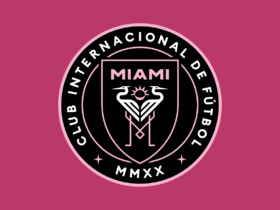As organizations continue to pivot, innovate, and find new and creative ways of approaching how they do business, one thing is for sure. The most successful leaders ensure that they have motivated, dedicated and yes, organized, people surrounding them to help keep the ship on track. While the top leader in an organization needs to be engaged in day-to-day operations, that is not the same as being involved in virtually every detail. They should be the key visionary defining goals, expectations, and action plans, but then they must surround themselves with professionals who execute and don’t require someone monitoring their progress every day.
The following leadership and communication traits are required for those who may not fall at the top of an organizational chart, but are those who are expected to work independently, efficiently and in an organized fashion to move the organization forward:
–Strategically communicate. Every team member within an organization plays a critical role in filtering and editing information not only to their peers, but also to the CEO or team manager when appropriate. This is a tricky area, because even though it is important for the CEO to have access to important data, he or she can be overwhelmed with too much information. Therefore, the organized leader ensures the essential information is delivered while omitting extra details that could just become noise or a distraction.
–Follow up and follow through. If you are assigned a project, it is your responsibility to create deadlines, deliverables, and benchmarks and agree upon when and how you will be reporting back to the CEO or your team on your progress. There is nothing worse for a CEO than to continually have to go to a team member and ask, “Where are you with project XYZ?” As teams continue to shrink and people are doing more with less, it is more important than ever that you own your specific projects and responsibilities and then share key updates with those involved when appropriate.
–Embrace Feedback. Becoming an organized, effective, and efficient leader does not happen by accident. It takes discipline, focus and an overall commitment to continuous improvement. One of the best ways to improve as a leader, communicator or manager is to proactively seek feedback from others around you. For example, ask someone on your team, “Bob, what specifically can I be doing to better assist you with the Jones Project?” Or, ask your CEO, “Please identify one area where I can improve as a leader/communicator.” Be open to the feedback and then use it to become an even stronger leader on behalf of your organization.
–Confront issues. Too often we ignore a problem in the hopes it will go away. In any aspect of life, whether at work or at home, it is much more productive to confront issues or challenges head on. Whether it is a missed deadline, an error in a proposal or a dissatisfied client, the best approach is to accept the fact that there is a problem, identify potential solutions, and then take action to address it. Doing so decreases worry and will allow you to move on to other tasks at hand.
–Get organized. While this may seem obvious, becoming an organized and efficient leader requires you to get organized. Whether that is decluttering your desk, clearing out your e-mail inbox, using an online program or app to track your projects, or simply keeping a steno pad where you prioritize your “to do” list, the key is to be intentional with how you work so that you can have a clear mind and be more efficient in all you do.
Steve Adubato's Lessons in Leadership with Michael Clinton and Calvin Ledford Jr.
On this edition of “Lessons in Leadership”, Steve Adubato and Mary Gamba are joined by Michael Clinton, Author, ROAR Into the Second Half of your Life. ROAR focuses on professionals in the second half of their life being proactive and creating a future they want right now. Then, Steve and Mary talk with Calvin Ledford Jr. President, PSEG Foundation, Director Corporate Social Responsibility, PSEG, about his commitment to giving back to the community, relationship-building and the keys to leading a successful non-profit organization.











